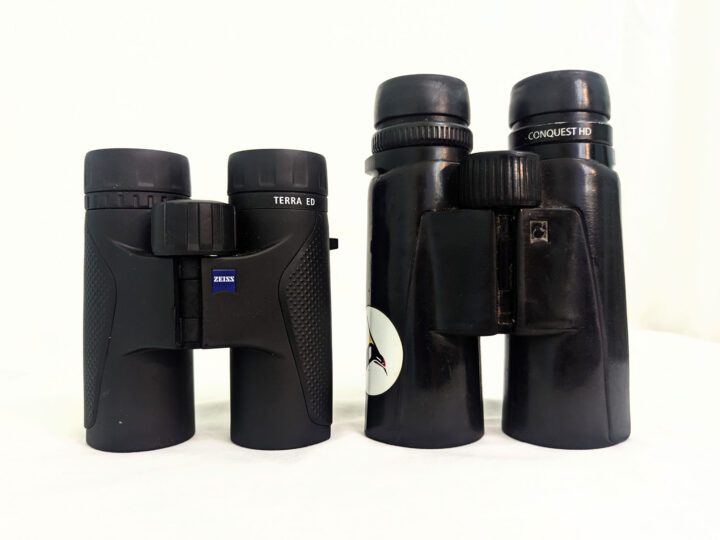Binocular Size and Weight Comparison: Find the Perfect Combination
Comfort is a key part of your birdwatching happiness—so we compiled size and weight stats for more than 50 binoculars from recent reviews.
September 8, 2023
If you’re a birdwatcher in the market for a pair of binoculars, we have good news and bad news.
The good news: there are so many excellent models to choose from. The bad news: the sheer number of options can be overwhelming. That’s why we created a guide to choosing binoculars to help you decide on features like magnification, feel, ergonomics, optical quality, and overall size.
We’re lucky to live in a time when even relatively inexpensive binoculars can offer impressively bright, sharp images. That means you can also factor in comfort and ease of use when looking for a new pair.
Manufacturers list size and weight stats for their binoculars, but they can be hard to put in context. How does binocular A compare against binocular B? Browse the graph below to see how more than 50 binoculars stack up to each other. If you’re looking for small, lightweight models, look in the lower left of the graph. If you’re more interested in robust builds with larger lenses, look in the upper right.
Hover over each dot (or tap on mobile) to bring up the model name, price, and our recommendation from our in-depth full-size binocular review and compact binocular review. Note: Weights in this graph include lens covers, so they may differ from manufacturer specifications.
Full-Size vs. Compact: What’s the Difference? So-called full-size binoculars have an objective lens of around 42 mm diameter (that’s the “42” in the “8×42” part of their name). Because of their relatively large lenses, these binoculars are great at producing bright images even in low-light conditions. (Here’s our review of more than two dozen full-size binoculars.)
Those large lenses require a larger, heavier overall design. Compact binoculars typically have objective lenses around 30 or 32 mm (an 8×32 pair would have 8-power magnification and a 32-mm objective lens). These binoculars are smaller, weigh less, and pack away more easily than full-sized binoculars, though they may perform a bit less well in the low light of dawn or dusk. (Here’s our review of two dozen compact binoculars.)

All About Birds
is a free resource
Available for everyone,
funded by donors like you
American Kestrel by Blair Dudeck / Macaulay Library